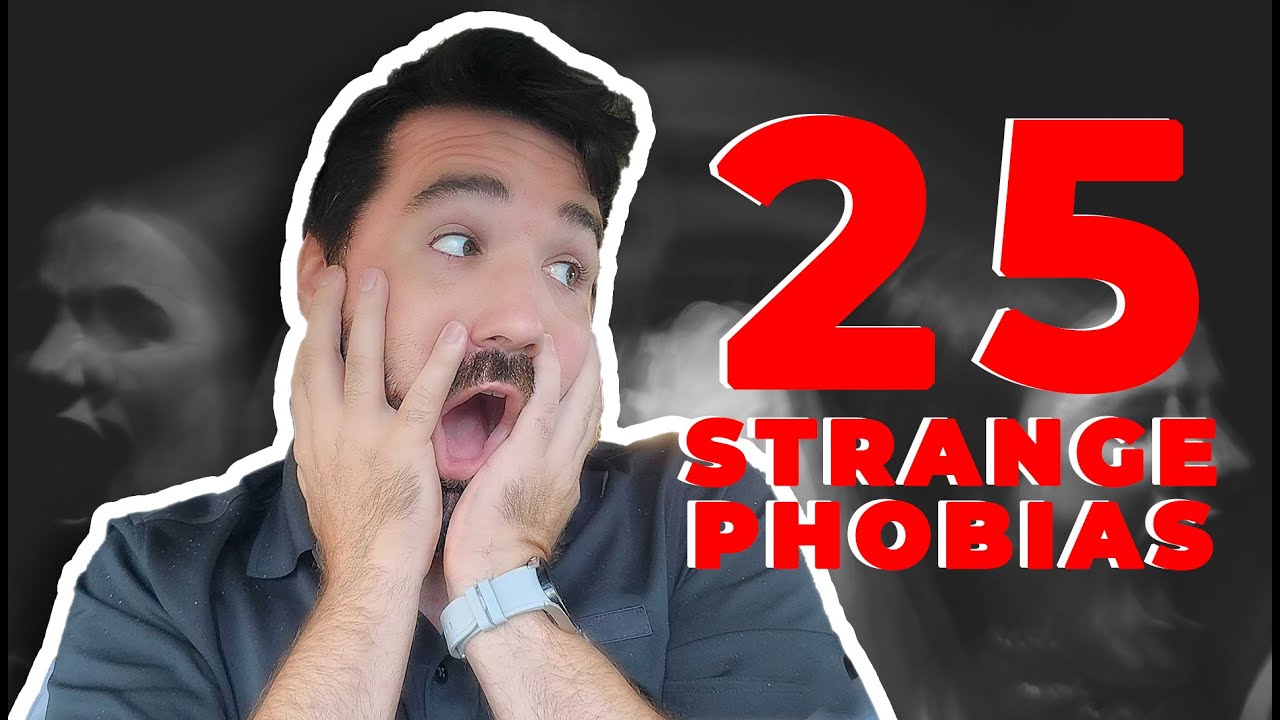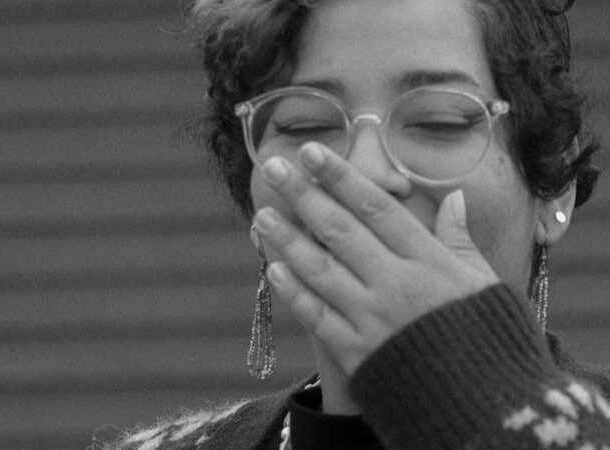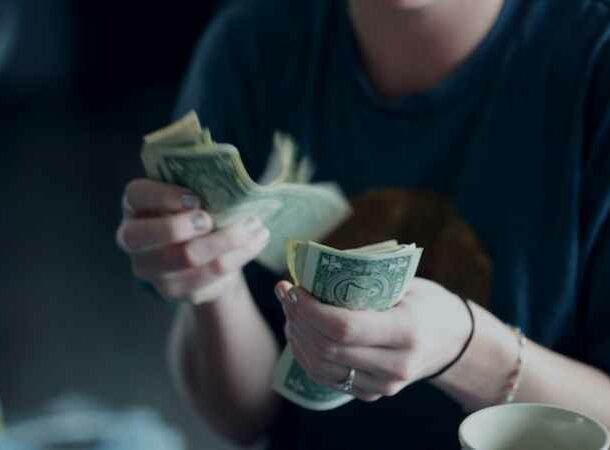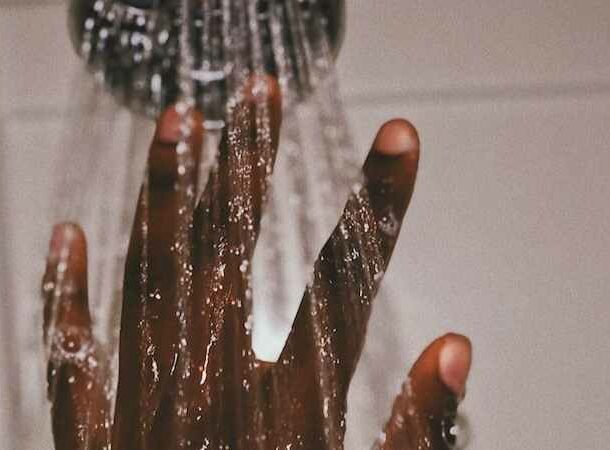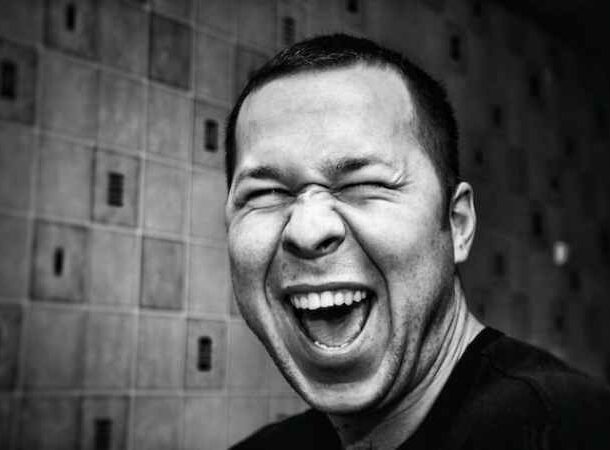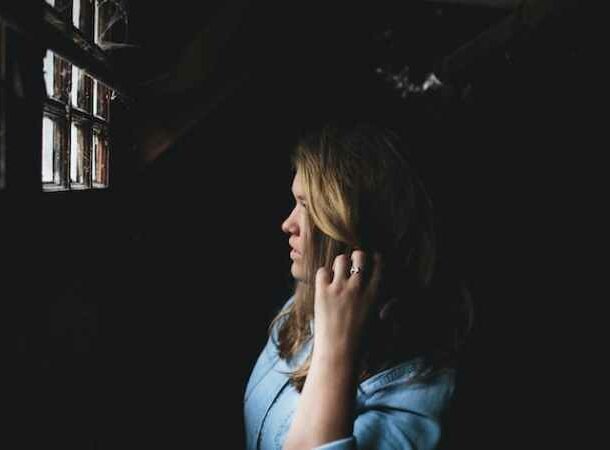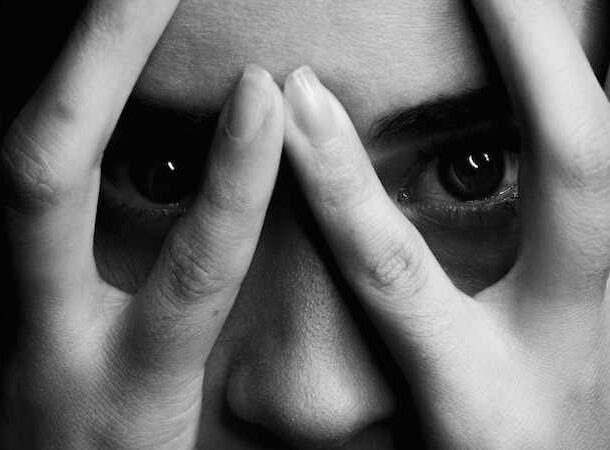Phobias are no joke. It is believed that at least 25% of adults suffer from one or more phobias. Most phobias are caused by some form of trauma experienced early in life or even a single moment that leaves a kind of scar in the sufferer’s mind. Some of the most common phobias you’ve heard of are: Claustrophobia, the fear of enclosed spaces, is one of the most common and well known. The same is true with trypanophobia, which is the fear of needles, or acrophobia, the fear of heights. But some phobias are a bit less easy to understand. Even though they are real for the sufferer, an outsider may just not get it. With that in mind, here are 25 strange phobias that you could have. Some people with zoophobia are afraid of all animals, but they are in the minority. Most people who deal with zoophobia are afraid of a specific animal. The most common are ophidiophobia (the fear of snakes) and arachnophobia (the fear of spiders). Other, less common animal phobias are cynophobia (fear of dogs) and entomophobia (the fear of insects). If you have any form of zoophobia, you are not alone. Zoophobia, in all its forms, is one of the top three most common phobias. One of the causes of this phobia could stem from one of the germ phobias. Because hair is often dirty or oily or can sometimes carry germs or lice, chartophobics are disgusted by it and can experience physical sickness from touching or even being near it. Pogonophobics are thought to associate facial hair with poverty or homelessness. They see people with beards as dirty or diseased. Another cause could be that people with beards have large portions of their faces covered, which sufferers associate with the wearer being mysterious, untrustworthy, or malevolent. With the popularity of beards these days, times must be rough for pogonophobics! Chorophobia is the fear of dancing. Unlike most other phobias, which stem from traumatic experiences, chorophobia can be caused by other sources, such as growing up in a strict religious household where dancing is seen as a sin or from an intense fear of being touched. You may be saying, “So just don’t dance! What’s the big deal? ” Well, imagine you never get into any relationships because it may end up in marriage. People dance at weddings, so you have to avoid falling in love because what’s the point? That’s just how anxiety works and how crippling a phobia can be. It can destroy someone’s entire life. Omphalophobia is the fear of belly buttons. It is what is known as a “specific phobia,” which is an aphobia that focuses on a single, minute detail. It is completely irrational, and the person who has it knows it is. But that makes no difference. It is thought that those with this condition believe that the belly button could unravel in some way, causing extreme pain or possibly death. We know, and they know this simply could not happen. The thought sits there in the back of their minds. Most likely stemming from Acerbophobia, which is a fear of sour things, pickles legitimately cause some people to have irrational panic and anxiety at the mere thought of pickles. For some, it may be the taste. Others may be triggered by the way they look, which is a source of fear. Whatever the cause or name, I can assure you that pickle phobia is a real thing. How do I know this? I actually know someone who suffers from it. It’s difficult not to laugh when you see someone scream, cry, and flee when confronted with the little green terror vegetable, but you have to sympathize with them. A pickle phobia can make their lives a brutal hellscape of brine-soaked evil. And that’s just no way to live, is it? Obviously, the unimaginable cycle of fear can seem never-ending, leading to long-lasting depression and anxiety disorders. Thankfully, it is a very treatable phobia that many people overcome. Atelophobia goes far beyond what most people would consider “perfecrionism.” It is terrified of making even one small, simple, insignificant mistake. It causes people to avoid any and all situations where even the possibility of a mistake is present. People with atelophobia likely grew up in a strict household where they were constantly criticized for everything and there was no flexibility offered to them. They learned to adapt those traits into their own perceptions of themselves, which manifests as the phobia. So if you are the type of parent that always pushes your kid to do more and be better all the time, maybe lighten up a little. You could be doing more damage than good. Urophobia can take on two forms. You could be afraid of other people’s urine or of your own urine at the same time. The irrational fear and anxiety are upsetting and could make the necessary trips to the bathroom an almost traumatic experience. And owning a pet like a dog or cat would be completely out of the question. But honestly, I get it. Maybe it’s different for women, but for men, who, at least in public places, usually end up standing next to other guys at urinals, it can be pretty gross. You are always hoping you don’t get any “splashback”. Trust me, it’s not fun. The most likely causes are extensions of being afraid of loneliness and/or isolation. We have become so dependent on our devices for literally everything that being without them or even being unable to use them for any period of time is unthinkable. Society has become so addicted to things like social media, immediate information, and while-it-is-happening news updates that some people don’t even know how to function as human beings without them. There is also another reason people become addicted to their phones, and it has nothing to do with a mental issue. It’s called dopamine. When dopamine is released into your system, it causes you to feel happy, motivated, or excited. Whenever you take a quick look at Instagram, check your email, or get a text, a little shot of dopamine is released, literally acting as any drug would. You experience a moment of euphoria every time you enter your passcode. Over time, your body starts to physically need dopamine to come at a much quicker pace. Essentially, nomophobia is caused by addiction rather than fear. People are legitimately addicted to the feeling they get from their phones. People with thanotophobia have an extreme fear of dying or the process of dying. They are also generally fearful of others they know or care about dying. People who have this disorder usually include those who have experienced the traumatic death of a loved one or have witnessed someone actually passing away. It is estimated that between three and ten percent of all people have this intense fear of death. One interesting part of this is that while younger adults have a fear of death, older people have a fear of the dying process. The basic idea behind somniphobia is that what is most frightening about sleep is not falling asleep, but what might happen to you once you are asleep. And I’m not talking about intruders coming into your house. I mean things like nightmares or night terrors, or even sleep paralysis, which, if you have never experienced it, can be truly horrifying. The fear of these things can cause insomnia, stress, anxiety, and dread as bedtime approaches. Worry and anxiety can cause fitful sleep as your mind tries to subconsciously deal with stress in the form of dreams, thus adding to the phobia’s effects. Everyone knows that sleep deprivation can cause many types of physical problems and illnesses, shortening your lifespan. So you could say that somniphobia could lead to death.
A phobia over colors?
A person is usually afraid of one or two colors. Fear of the color yellow (Xanthophobia) or fear of the color purple (Porphyriaphobia) are two examples. If a person is afraid of all colors, it will usually be focused on very bright colors that really stand out. This type of phobia is usually associated with post-traumatic stress disorder, autism, or Asperger’s Syndrome. With Asperger’s or Autism, it is almost impossible to understand what causes the phobia to occur. With PTSD, it is likely that whatever it was that caused the trauma is associated with color. Say someone is in a war-related hot zone and they see a friend being shot or hit with debris from an explosive. If they see their friend covered in blood, they may suffer from a phobia of the color red. I feel for anyone who has experienced something so traumatic that just seeing color can cause a panic or anxiety attack. Being afraid of clowns is very different than having Coulrophobia; the crippling fear of clowns. There is a theory that the source of this phobia is brought about by the idea that the bright happy makeup they wear doesn’t seem to match their faces underneath. The first clowns were actually court jesters whose job was to make royalty uncomfortable. They were created to be mischievous and unsettling. Current pop culture icons, such as The Joker, Pennywise, and the uber-creepy Wrinkles the Clown, have only helped to further this perception. Someone with kenophobia, however, experiences those intense feelings while in an open space or a void. They would have great difficulty being in an empty arena before a concert or even walking into a large empty room. They are also irrationally fearful of voids like a large open field or pasture. In these places, they feel exposed, which leads to intense anxiety, which leads to panic attacks, which leads to more anxiety. In fact, many phobias have this effect on people. Say you once saw someone with a peanut allergy have a reaction after accidentally eating something with peanut butter in it. They begin to choke and could die without immediate medical attention. This memory might stay in your unconscious mind and cause the phobia. Another possible cause could stem from a general choking phobia. The fear of choking is a common one. With Arachibutyrophobia, this should not be taken lightly. Sometimes a phobic person can show physical signs of their fears. For someone who fears choking, the act of swallowing actually becomes difficult. In essence, the phobia causes symptoms, which fuel the phobia, which worsens the symptoms. It’s a vicious circle of panic and terror that people are just stuck with. from peanut butter. Fictofabriphobia is the fear of made-up characters. The name is from Greek with “Ficto meaning “a falsehood,” “Fabri” meaning “to make real,” and obviously “Phobia” meaning “fear of”. A child’s mind absorbs information at an astounding rate. The reason they are fascinated with fictional characters like Mickey Mouse is that, in some ways, they believe them to be real. This is understandable considering parents, a child’s most trusted individual, tell them they are. They tell kids about Santa or that they are going to meet Micky Mouse. That stuff sticks in a child’s mind. For the unfortunate, as they grow, part of this belief stays locked in their brain and causes extreme anxiety and panic at even the sight of a mascot. Plutophobia is the fear of money, wealth, or wealthy people. You may be thinking, “Why would anyone be scared of having lots of money?” Well, it’s not the money per se, it’s more about everything that comes with the money. Those with plutophobia have more fear of all of the responsibilities that come with money and all of the headaches associated with it. They deal with the anxiety associated with having to manage and be responsible for a large sum of money. If you think about it, it’s actually understandable that they would deal with these feelings. If you look at all of the lottery winners who found themselves with ruined lives because of their “good fortune“, you can begin to understand where these feelings come from. Ablutophobia is the intense fear of bathing, showering, or washing. What could cause someone to suffer from this phobia? It usually stems from a traumatic event as a child, such as nearly drowning in a bathtub or being in an abusive situation. While these things can be the cause, ablutophobia is primarily found in toddlers and young children. Baths are strange and weird to them. Also, if the parent bathing them is all business and never makes it a fun experience, it’s understandable that children could be afraid of them. Luckily, most people simply grow out of ablutophobia as they get older. But for others, this fear can be debilitating and cause real problems for the sufferer. People with geliophobia actually experience intense anxiety at the sound of laughter itself and will remove themselves from any situation where the possibility of laughter exists. Doctors have theorized that geliophobia is most likely to appear in people who have either lived with someone with the disorder or with someone who suffers from a very similar geliophobia. HP is thought to arise from one of the social phobias. It is likely that a person with HP probably had an experience in school where they were reading aloud or speaking in front of a group of people and were laughed at for a mispronunciation of some other long word. This can be quite traumatic for any young person, planting the seeds of HP early in life. If you have this phobia, you will stay away from any situation that could be fun or bring happiness. The fear of sunlight is different from having photosensitivity, which is basically an allergy to UV rays. Heliophobics can’t even think of themselves going out in the daylight. Obviously, this phobia can result in those afflicted never being able to live any kind of normal life. The causes of heliophobia are thought to have their roots in the effects of the sun rather than sunlight specifically. Maybe the heliophobic once had an especially terrible sunburn or feared getting skin cancer. It may seem like a ridiculous thing to be terrified of, but whatever the cause, heliophobia is a serious condition. Vampires are not the only beings with an aversion to mirrors. People with eisoptrophobia are ridiculously afraid of them as well. Sometimes stemming from body dismorphia issues, people with eisoptrophobia will avoid or fear mirrors because they are disgusted by what they see reflected back to them. But for others, it is much different. Many people with eisoptrophobia have an irrational fear that comes from superstitions or urban legends associated with mirrors. They may be afraid of mirrors because if they cause one to break, they will experience seven years of bad luck. There are also those who have heard legends such as “Bloody Mary,” where the spirit will appear and kill you if you say her name three times in a mirror while standing in a darkened room. At least that’s one version of the legend. And some people have probably just seen too many horror movies and experienced too many jump scares for their own good. Whereas doctors used to dismiss these disorders as someone being “scared of their own shadow,” panophobia has become a catch-all term for any disorder that is now better understood. But there are people who are essentially afraid of everything, all the time. They feel like they cannot live or function because they are convinced that something terrible is going to happen to them. It’s just a matter of when.
A strange phobia that’s afraid of itself.
Phobophobia can be caused if at some point in your life you experienced a scare that caused you to shake uncontrollably or by getting chest pains or vomiting. You go on to develop a fear of how you feel when you experience fear. You may also suffer from one or more of the hundreds of other phobias, and you get a fear of those. As Roosevelt once said, “the only thing we have to fear is fear itself”. In the case of Phobophobics, he was exactly on point.
